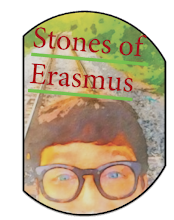
The body is constantly barraged with images, perceived by the image, informed by the image, speaks through the image and the text; the body has knowledge that language cannot express. The fallacy of torture is that it seeks from the body knowledge that the body cannot give. In an image-saturated society, the problem of the cogito, both the Cartesian indubitable certainty of mind and the split between mind and body fostered by the Enlightenment and onwards, has erroneously bifurcated the body and the mind, has wedged the two apart by scientific discourse; the mind has become privileged thus being subsumed under the subtitle of peripheral concern. The body, therefore, has become unnoticed, not a substantial claim to certainty, not given a voice in the political realm and not perceived holistically as an agent of viable literary discourse. Nietzsche and Schopenhauer understood this dynamic of pain needing a way to express itself; Nietzsche, forever the romantic, embraces pains because it gives him knowledge, it does not confine him to an unalive corner, but rather, pain, is an expression of life and living dangerously.
So in an effort to give the body back to poetry, the body, corporeal and enfleshed is a text and the contemporary novel is a place of transformation where this body can speak above the technological, 21st-century din and the political discourse that govern legislation, human rights action, and world-systems. The body haunts the text in which the cogito, the voice of reason, the privileged discourse of reason holds sway; because of this privileging of mind, “the body in pain” is unmade by the cogito – not into a real, tortured person, but rather a body politic, a set of nations pinned against one another on the global stage, a specter.
An ethical response that is genuine is lost by the cogito because of its insistence to bifurcate and divide, giving literary discourse an emphasis on mind instead of the body.
An agency of language for the body is uncertain in a tyranny of the cogito. “The body in pain” is subsumed by the cogito, the logical slice of reason; it is easier to think about the conflicts of nations instead of the real human beings involved in suffering, torture, and war, thus a feeling emerges that says there is no need for an ethical response to the real suffering of the other.
Anil’s Ghost by Michael Ondaatje is an example of the novel being able to give a voice to the pain in the body, speaking in the corners of literary texts, where a single line is enough to expose “the body in pain,” the body mutilated, the body abused (Scarry 11). Ondaatje’s novel is about torture and political violence set in the contemporary sphere of globalization that assumes different approaches to “the body in pain”. Elaine Scarry writes, “Physical pain does not merely resist language but actively destroys it, bringing about an immediate reversion to a state anterior to language, to the sounds and cries a human being makes before language is heard” (4). The voice of the tortured body, the mutilated body is destroyed by pain, reverted back to a state a priori to language; this is cause for ethical response, a giving back of a voice, The body interrogated, mutilated, evaporated is silenced, made obliterated of content (Scarry 33). The body in pain loses its voice in these novels giving rise to an ethical call to action not written by the cogito which either makes or unmakes the world via a two-pronged model: a creation of the world with Gamini Diaysena, an emergency room doctor and Ananda Udugama, an artist who reconstructs the face of the dead, or an unmaking of the world with the cold, slicing knife of Western reason symbolized by Anil Tissera, a UN forensic anthropologist.




.jpg)



